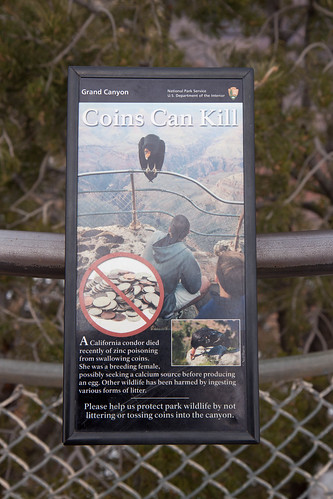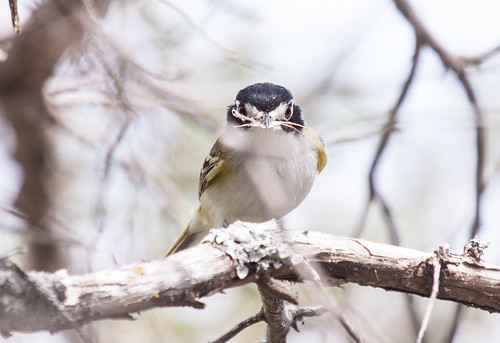I’ve been entering all the content of my book, 101 Ways to Help Birds, on my website, to make it easier for people to access this information that I spent 2 ½ years researching and putting together. Surprisingly, 11 years after publication the book still stands up remarkably well. In one section I mention some old technologies and software, but also strongly recommended eBird, which turns out to be perhaps even greater than the Cornell Lab originally envisioned. Where things are outdated or we have new and better information, I’m adding links and updates. It’s been a lot of work, but I’m very pleased with how it’s turning out—all you have to do to find it is click on “Ways to Help” in the top menu of my blog or webpage.
Over the years since I researched and wrote the book, I’ve felt increasing dismay that no one seems to pay attention to even pretty obvious things we can do to protect nature. When I went to the Grand Canyon in 2011, I learned that two California Condors released there had died after swallowing pennies, which are highly toxic. I’d written about how dangerous pennies are that were minted since 1982, when the zinc content rose to 96 percent.
I wrote about lead poisoning in Bald Eagles during hunting season, when they pick up carcasses and gut piles with lead bullet fragments. It’s been illegal to use lead shot in waterfowl hunting since 1991, and last year President Obama banned the use of all lead ammunition on national wildlife refuges, but the very first act of Donald Trump’s interior secretary Ryan Zinke was to reverse that ban! Ironically, the lead ban was just as protective of human beings, including the children of hunters, as it was for wildlife—there are increased lead levels in hunters’ families’ blood when they eat venison shot with lead ammunition, too. Many food shelves now ban venison contributions for that very reason.
This weekend I added the comments I made in closing my book. They are truer today than when I wrote them, so I’m going to quote them in full:
When I started writing this book in 2003, I knew that I faced a daunting task. I’d been working on conservation issues for many years and knew how many perils birds face in the world today. But as I researched, I learned more about the sheer magnitude of problems that I was already aware of—50 million birds a year at TV towers? A billion birds a year at windows? And I discovered perils that I’d never even imagined, large and small, from the dangers of fences for prairie chickens to the toxicity of pennies in ponds. How could I not feel discouraged? Like the children in Dr. Seuss’s The Cat in the Hat, birds face a mess that is “so big and so deep and so tall” that there seems no realistic way to solve it. No way at all.
Before we were even a nation, we worked together in a concerted effort to defeat the most powerful empire on earth and win our independence. Remembering that the only thing we had to fear was fear itself, we made enormous personal and collective sacrifices and survived the Depression, destroyed Nazism, and defeated the nation that had attacked Pearl Harbor. When we set our collective minds and hearts to it, we traveled to the moon, walked on it, and even hit a couple of golf balls up there. Now, if we continue to take steps backward, rather than toward clean air and water and energy, if we slide away from protecting the resources that belong to every single one of us, and if we abandon the natural habitat that sustains us and that is our rightful heritage, it will not be because we can’t make things better; it will be because we choose not to.
In the real world, there is no magical Cat who will ride in and clean up our messes for us. I have a few friends who deeply and truly believe that God will step in and save the day, but I grew up hearing that “the Lord helps those who help themselves.” And I can’t forget that God charged Noah with saving every species. This mess is our responsibility, individually and collectively. What is the solution? You and I are.


